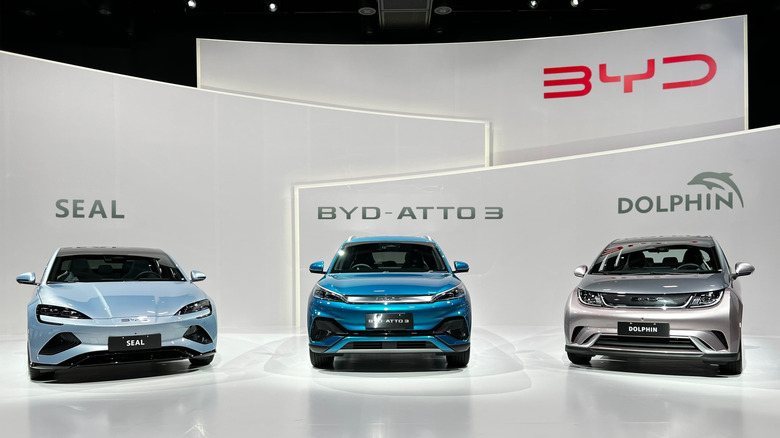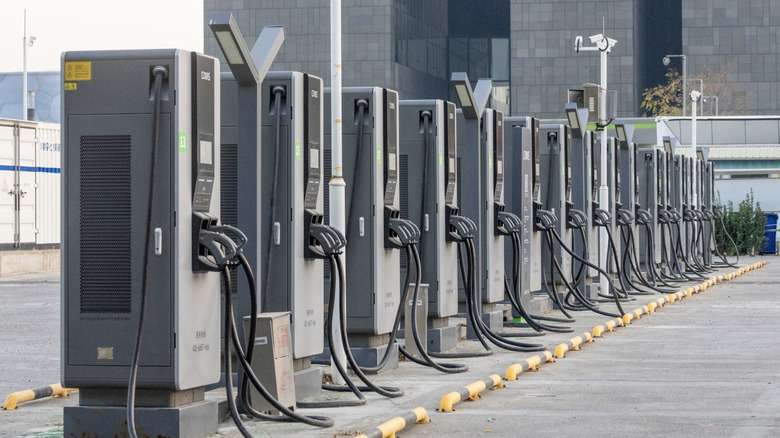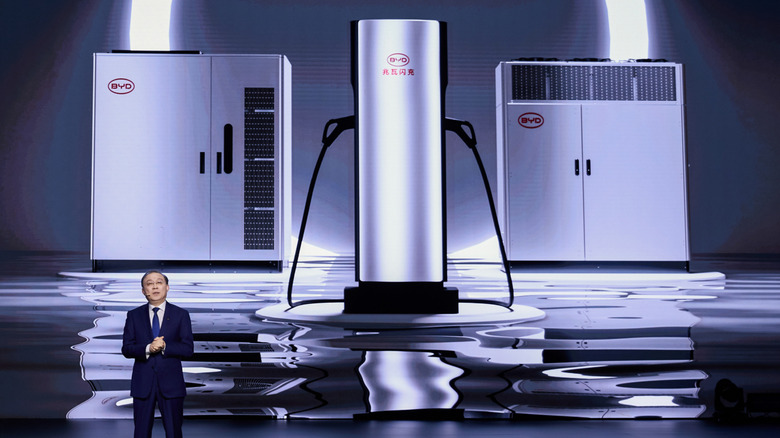Why China Is Far Ahead Of The US In Terms Of EVs And Charging Infrastructure
The reason why China is far ahead of the U.S. in terms of EVs and charging infrastructure is down to each country's position in the global automotive marketplace. The U.S. has been making automobiles for around 130 years, with the first gasoline-powered American car going on sale in 1896. The vast majority of American automotive production has used internal combustion engine (ICE) vehicles. The length of this ICE-based head start, from U.S.-based, as well as the other legacy producers, was simply too much for the Chinese automotive industry to catch up to, much less surpass.
So the Chinese government, which oversees the country's industrial policy, decided to take the lead in the still-evolving field of electric vehicles (EVs), or as China would define them, New Energy Vehicles (NEVs), which covers both battery-electric and plug-in hybrid vehicles that must be plugged in to recharge. With the right policies in place, the Chinese EV industry could potentially lead the world. This has come to pass in the areas of EV technology, EV production levels, and EV charging infrastructure. Chinese EV development began back in 2009, with a subsidy program for public transit vehicles like taxis and buses. These incentives covered both types of NEV powertrains. The next step occurred in 2013, when a system of consumer subsidies was applied to individual NEV purchases. These subsidies ended in 2022, but they achieved the desired effect — new EV registrations hit 8.1 million by 2023, up 35% compared to the previous year. It's part of the reason why Chinese cars are so cheap.
Chinese NEV sales are increasing every year.
Fast forward to today, and the May 2025 NEV sales results for the Chinese market show that 1.02 million units were sold in a single month, with NEVs representing around half of all new vehicle sales. Where do they all charge? As of December 31, 2024, China had nearly 13 million NEV chargers for drivers to use. This is a 49% increase over the number of chargers available just a year earlier. China clearly understands that the country's charging infrastructure must grow to sustain further NEV sales there.
As a comparison, as of June 2025, the U.S. had a total of 217,929 chargers for the entire country, a drop of 5% from the previous month, while U.S. EV sales for May 2025 numbered just 103,435 units, despite the popularity of these best-selling electrified vehicles in the United States. When it comes to competing with China in NEVs, we are going in the wrong direction.
Another reason for this state of affairs has been the politicization of EVs and NEVs in the U.S., along with recent legislative changes that will eliminate the current incentives that apply to purchasing and leasing these vehicles, and building the necessary support networks. China is very likely to remain far ahead of the U.S. in terms of EVs and charging infrastructure.
What is China doing to stay ahead of the US?
China is not resting on its already large lead in terms of EVs and charging infrastructure. Manufacturers in China are competing to release the next set of technological developments in the field, which concern both the batteries themselves and a better way to charge them. One of the players here is Contemporary Amperex Technology, also known as CATL, China's largest maker of automotive batteries for NEVs, which makes one-third of the world's EV battery packs. The other is China-based BYD, the world's largest EV manufacturer, which announced its Super e-Platform with Megawatt Flash Charging. These two companies have separately developed battery and charging systems that would permit an electrical recharge in just five minutes, which is comparable to the time it takes to refuel a gasoline-powered vehicle. While this is great news for Chinese consumers, these developments are not likely to reach the U.S. Another Chinese company, Huawei, has also revealed a new EV battery patent that claims extreme range and ultra-fast charging.
China's huge lead in EV and NEV development, along with its extremely low domestic pricing for these vehicles, has struck fear into U.S. EV producers. Concerns about an influx of cheap, Chinese EVs have led to extremely high tariffs imposed by the U.S., starting at 100% under the Biden administration, then increasing to 145% under President Trump. This has effectively kept these vehicles out of the U.S. market.


